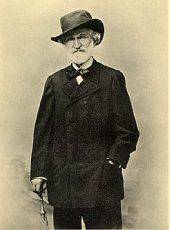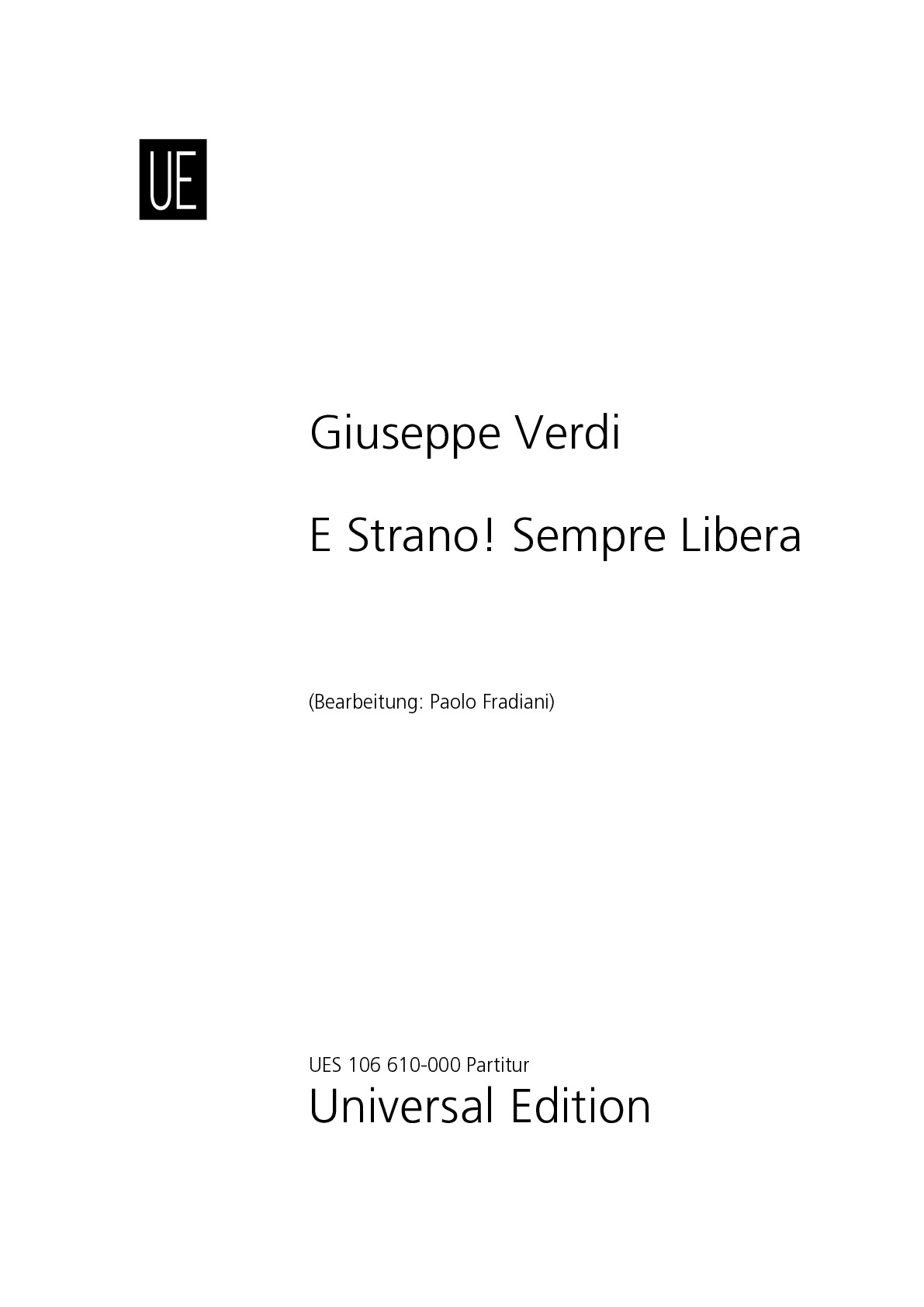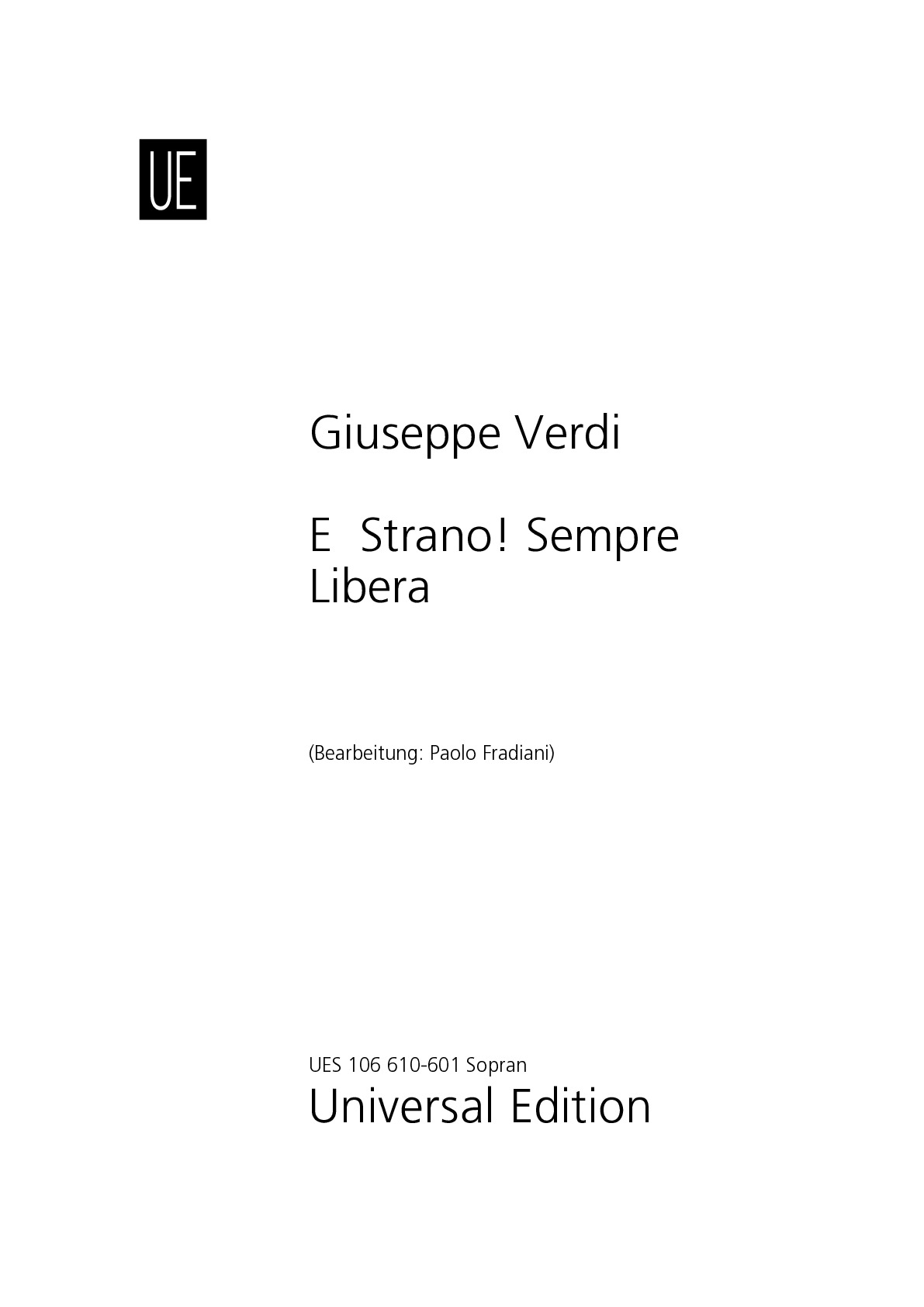

Giuseppe Verdi
E Strano! Sempre Libera
Short instrumentation: 1 1 1 1 - 1 1 1 0, hp, str
Duration: 9'
Bearbeitet von: Paolo Fradiani
Solos:
soprano
Instrumentation details:
flute
oboe
clarinet in Bb
bassoon
horn in F
trumpet in Bb
trombone
harp
violin I
violin II
viola
violoncello
double bass
E Strano! Sempre Libera
Printed/Digital
Translation, reprints and more


Giuseppe Verdi
Sopran (E Strano! Sempre Libera)Type: Solostimme(n)
Sample pages
Work introduction
La traviata; The Fallen Woman) is an opera in three acts by Giuseppe Verdi set to an Italian libretto by Francesco Maria Piave. It is based on La Dame aux camélias (1852), a play by Alexandre Dumas fils adapted from his own 1848 novel. The opera was originally titled Violetta, after the main character. It was first performed on 6 March 1853 at La Fenice opera house in Venice.
Piave and Verdi wanted to follow Dumas in giving the opera a contemporary setting, but the authorities at La Fenice insisted that it be set in the past, "c. 1700". It was not until the 1880s that the composer's and librettist's original wishes were carried out and "realistic" productions were staged. La traviata has become immensely popular and is among the most frequently performed of all operas.
This is a reduction of the aria "Sempre Libera", the first performance took place in 2019 with the Orchestra da Camera della Marsica. The arrangement starts from the recitativo "E' strano".
What is necessary to perform this work?
Minimum instrumentation requirements:
1 Flute
1 Oboe
1 Clarinet in Bb
1 Bassoon
1 Horn in F
1 Trumpet in Bb
1 Trombone
1 Harp (or Piano)
1 Voice
2 Violins
1 Viola
1 Violoncello
1 Doublebass
